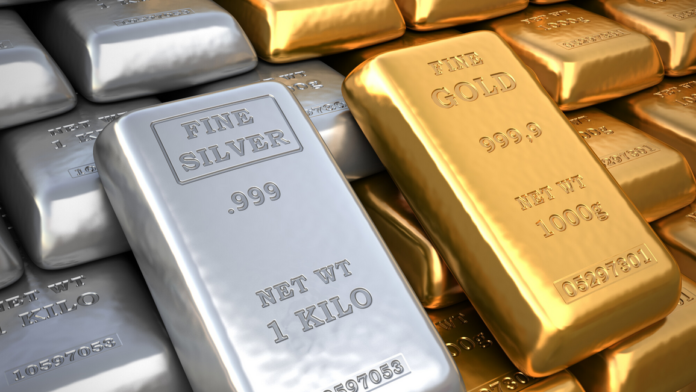With inflation on the rise, you might be looking for options to diversify your investments to hedge against it. Commodities and real estate are popular choices, as is gold because it’s seen as an alternative currency.
While gold gets a lot of attention for investment, there are other metals and metal alloys you might consider instead. You might own physical blocks of it or look to invest through the derivatives market or mining company stocks.
Good investment choices involve understanding the risks and rewards of the different types of precious metals, so let’s take a look at a few you might consider for your portfolio.
Investment Types of Precious Metals
While all these metals are precious, only certain ones fall into the investment category. They’re used to diversify portfolios as a hedge against inflation and during times of financial uncertainty.
All find use and value through industrial applications, but investment-level metals tend to have their own intrinsic value.
Gold
The most well-known and common investment choice, gold has a long history with ties to global economies. It’s not the rarest, but its historical use as currency and in the jewelry industry gives it intrinsic value.
You can choose from different types of gold investments, with the most popular being bullion you can put in your safe. There are also mutual and IRA funds like www.raremetalblog.com/gold-ira-companies/ where you can hold shares with other investors.
Silver
Silver has more industrial uses than gold, so it has value through that as well as a historical currency. It has the highest electrical and thermal conductivity of any element, giving it high value in the industry.
As with gold, you can invest in various types of silver bullion you hold directly. Silver is popular because it’s less expensive than gold but still valuable.
Platinum
Considered one of the most precious, platinum has superior corrosion resistance that makes it valuable for use in catalytic converters and lab equipment. You can invest in it as bullion struck into coins or bars.
Platinum’s value tends to rise during times of prosperity but goes down during uncertainty. It runs the opposite of gold, making it a complementary portfolio piece.
Palladium
Related to platinum chemically, palladium has similar industrial uses. In fact, more than half the supply finds its way into use in catalytic converters and the like.
Palladium is relatively new from an investment standpoint, only beginning to be used in coins in 1966. It’s low on the radar at the moment, but as more mints create bullion, it should gain in popularity.
Non-Investment Precious Metals
While you might find ways to invest in these through company stocks, some precious metals find value due to their use in industrial processes. These include ruthenium, rhodium, iridium, and osmium.
They’re important and valuable due to their use in electrical and automotive spaces or, in the case of iridium, use in special metal alloys. They fall in the same group as platinum and palladium with an extreme density that makes them strong and durable.
Ready to Invest?
You have several types of precious metals to consider if you’re looking to diversify your investment portfolio. Investing can happen through a special IRA or mutual funds or you can hold bullion directly. The best precious metals for you depend on your comfort with risk and overall investment goals.
If you found this article helpful, check out others on our site related to business and investing topics.










